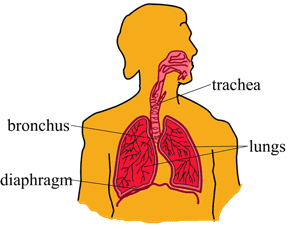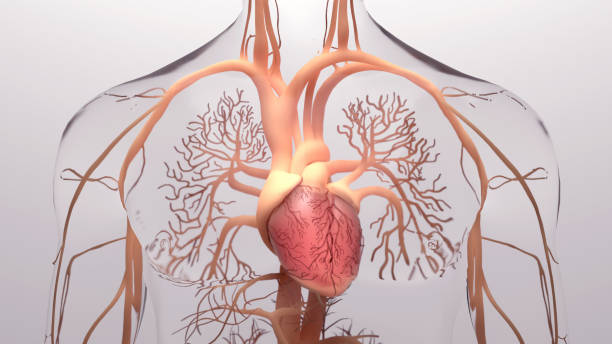The Body’s Gas Exchange
In human physiology, gas exchange is exchanging oxygen and carbon dioxide between an organism and the environment. The respiratory system performs gas exchange by bringing air into the lungs where oxygen diffuses into the blood and carbon dioxide diffuses out. The circulatory system then transports these gases to the tissues where they are needed or released. Gas exchange is vital for all organisms as it ensures that cells receive the oxygen they need to produce energy and release waste products such as carbon dioxide.
In order for the body to function properly, it must exchange gases with the environment. This process is known as gas exchange. Gas exchange occurs in the lungs, where oxygen from the air is taken in and carbon dioxide is released. The oxygen is then transported to the cells of the body by the bloodstream. In the cells, oxygen is used in cellular respiration to produce energy. Carbon dioxide, a waste product of cellular respiration, is transported back to the lungs and exhaled.
Gas exchange is a vital process that allows the body to obtain oxygen and get rid of carbon dioxide. Without oxygen, cells would not be able to produce energy. And without getting rid of carbon dioxide, it would build up in the body and cause problems.
The Respiratory System: How it Works
The respiratory system is a set of organs responsible for taking in oxygen and expelling carbon dioxide. The primary function of the respiratory system is gas exchange, which refers to the transfer of oxygen and carbon dioxide between the lungs and the bloodstream. The main parts of the respiratory system are the nose, mouth, throat, larynx, trachea, bronchi, and lungs. Each part has a specific role to play in ensuring that gas exchange occurs efficiently. For example, the nose is responsible for filtering the incoming air and warming it to body temperature. The mouth provides an alternative pathway for air to enter the body during activities such as eating and speaking. The throat connects the nose and mouth to the rest of the respiratory system and also houses the vocal cords. The larynx is responsible for producing sound through the vibration of the vocal cords.

Parts of the Respiratory System
The Respiratory System is made up of several parts that work together to help us breathe. The parts of the respiratory system are the bronchi, diaphragm, alveoli, pleura, bronchioles, larynx, pharynx, nasal cavity, trachea, and lungs.
The bronchi are the two main airways that branch off of the trachea and lead to the lungs. Each bronchus is lined with mucus-producing cells and ciliated cells. The mucus traps inhaled particles, while the ciliated cells sweep the mucus and particles towards the throat where they can be swallowed or expelled.
The diaphragm is a muscular membrane that separates the thoracic cavity from the abdominal cavity. It is attached to the ribs and sternum and consists of two layers of muscle, the inner layer being the most important for respiration. The diaphragm contracts and relaxes during breathing, which causes the lungs to expand and contract.
The alveoli are tiny air sacs in the lungs where gas exchange takes place. The walls of the alveoli are very thin, which allows oxygen and carbon dioxide to pass through them easily. The alveoli are lined with a special type of cell called an epithelial cell. These cells secrete a substance called surfactant, which helps to keep the alveoli from collapsing.
The pleura is a thin membrane that covers the lungs and the inner wall of the chest cavity. It is made up of two layers: the visceral pleura, which covers the lungs, and the parietal pleura, which lines the inner wall of the chest cavity. The pleura is lubricated by a thin layer of fluid, which allows the lungs to move smoothly as they expand and contract during breathing.
The bronchioles are small airways in the lungs that branch off from the larger bronchi. These smaller airways are important for exchanging oxygen and carbon dioxide between the lungs and the blood. The bronchioles are lined with smooth muscle that can contract or relax to control the airflow through the airways. When the smooth muscle contracts, it narrows the airway and makes it more difficult for air to flow through.
The larynx, also known as the voice box, is a muscular organ located in the throat. The primary function of the larynx is to produce sound, which is used for communication. The larynx is also responsible for protecting the trachea, or windpipe, from foreign objects and aspirating food or liquids.
The pharynx is a hollow tube that starts at the back of the nose and extends to the esophagus. It is about 5 inches long in adults. The pharynx has three main parts: the nasopharynx, the oropharynx, and the laryngopharynx. The nasopharynx is the upper part of the pharynx. It is behind the nose and above the soft palate.
The nasal cavity is a long, narrow, air-filled space that extends from the nostrils to the back of the throat. It is lined with moist, thin membranes that contain tiny hairs (cilia). These hairs trap dust and other particles in the air and keep them from reaching the lungs. The mucus secreted by the membranes moistens and filters the air.
The trachea, also known as the windpipe, is a tube that extends from the pharynx to the bronchi. It is composed of cartilage and muscle, and it is responsible for transporting air to and from the lungs. The trachea is lined with mucous membranes, which help to trap particles and prevent them from entering the lungs.
The lungs are a pair of organs located in the chest that is responsible for exchanging oxygen and carbon dioxide between the body and the atmosphere. The trachea (windpipe) branches into two tubes called bronchi, which enter the lungs and divide into smaller air passages. The smallest of these air passages end in tiny air sacs called alveoli. Oxygen enters the body through the nose or mouth and is inhaled into the lungs.
The Lungs: The Body’s Gas Exchange Organs
The lungs are the body’s gas exchange organs. They are responsible for exchanging oxygen and carbon dioxide between the air and the blood. The lungs are located in the chest cavity and are surrounded by the rib cage. The lungs have two main functions: to take in oxygen from the air and to remove carbon dioxide from the blood. The process of gas exchange occurs in the alveoli, which are tiny sacs located at the end of the bronchial tubes. When we breathe in, oxygen enters the alveoli and diffuses into the blood. At the same time, carbon dioxide diffuses out of the blood and into the alveoli. When we breathe out, carbon dioxide is exhaled from the lungs.
The Importance of the Respiratory System
The respiratory system is one of the most important systems in the human body. It is responsible for delivering oxygen to the cells and removing carbon dioxide from the body. The respiratory system also helps to regulate the pH levels in the blood and keep the body temperature stable. Without the respiratory system, the body would not be able to function properly. The respiratory system is essential for life and it is important to take care of it. There are many things that people can do to keep their respiratory system healthy, such as quitting smoking, exercising regularly, and eating a healthy diet.
In conclusion, the respiratory system is vital to our daily lives. It helps us to breathe, exchanging oxygen and carbon dioxide in the blood. The lungs are the main organs of the respiratory system, and they are responsible for taking in oxygen and releasing carbon dioxide. The respiratory system is also important for maintaining acid-base balance in the body and for producing vocal sounds.

